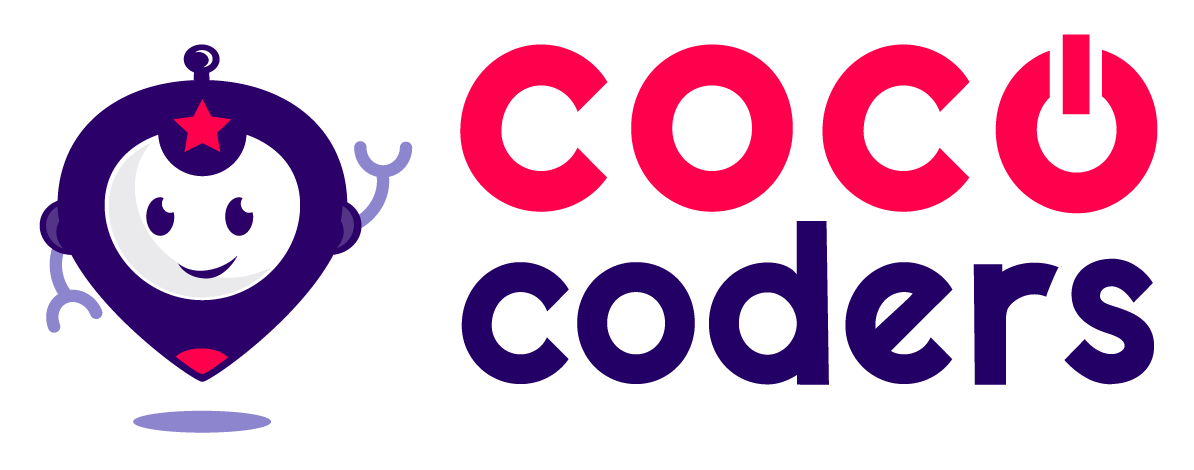How Learning to Write Code in Javascript Helps Kids Learn a Foreign Language
Learning to write code in JavaScript can significantly support the process of learning a foreign language due to the cognitive, structural, and skill-building parallels between the two.
Here’s how:
1. Develops Syntax Awareness
Both JavaScript and foreign languages rely on structured syntax:
JavaScript: Learners must follow strict rules, such as using semicolons, parentheses, and curly braces, to ensure their code executes properly.
Foreign Languages: Similarly, grammar rules and sentence structures must be followed for proper communication. Practicing this attention to detail in JavaScript can make learners more attuned to the grammatical rules of a foreign language.
2. Builds Pattern Recognition Skills
JavaScript: Coding involves recognizing and applying patterns, such as loops, conditionals, and reusable functions.
Foreign Languages: Learning verb conjugations, sentence structures, or phonetic patterns involves recognizing and internalizing linguistic rules. This overlap in pattern recognition strengthens the brain’s ability to identify and apply structures in new contexts, such as a foreign language.
3. Enhances Logical Thinking
JavaScript emphasizes logical problem-solving:
Breaking problems into smaller pieces.
Sequencing steps to achieve an outcome (e.g., writing algorithms). Foreign language learning also involves logic:
Understanding how to form sentences based on subject-verb agreement.
Applying language rules to construct meaning. This shared focus on logical progression sharpens analytical skills useful in both domains.
4. Improves Memory Retention
Both JavaScript and foreign language learning require memorization:
JavaScript: Remembering syntax, functions, and libraries.
Foreign Languages: Memorizing vocabulary, grammatical rules, and pronunciation. The brain's increased capacity to retain information from coding practice translates to better language learning, as it strengthens the neural pathways responsible for memory.
5. Fosters a Growth Mindset
In JavaScript, debugging is a critical part of learning:
Making mistakes is part of the process, and persistence leads to improvement. In foreign languages, trial and error is equally important:
Mispronunciations or grammatical errors help refine language skills. This shared experience of learning from mistakes helps learners build resilience and a growth mindset.
6. Encourages Step-by-Step Thinking
JavaScript teaches sequential thinking:
Writing a program involves breaking a task into small, logical steps. Learning a foreign language requires similar step-by-step processes:
Constructing sentences starts with understanding basic components, then building complexity over time. This systematic approach makes learners more effective in both coding and language acquisition.
7. Promotes Multimodal Learning
JavaScript often combines multiple learning methods:
Visual: Interpreting code on a screen.
Auditory: Listening to tutorials.
Kinesthetic: Typing code and running it. Language learning also integrates multisensory methods, such as speaking, listening, reading, and writing. Practicing multimodal learning through JavaScript prepares the brain to adapt to similar strategies in foreign language learning.
8. Offers Opportunities for Real-World Application
JavaScript: Coding is a practical skill with clear outputs, like creating web applications or games.
Foreign Languages: Language skills lead to real-world communication and cultural connections. Seeing tangible results in both areas motivates learners and reinforces the importance of practice.
9. Enhances Problem-Solving Abilities
JavaScript coding often involves troubleshooting:
Debugging errors or optimizing code to achieve a goal. In foreign language learning, problem-solving occurs when:
Translating phrases without knowing specific vocabulary.
Reconstructing sentences to make them grammatically correct. The shared emphasis on creative problem-solving builds cognitive flexibility.
10. Encourages Cross-Cultural Understanding
JavaScript, like foreign languages, connects learners to a global community:
Coding introduces learners to developers worldwide, fostering collaboration and exposure to diverse perspectives.
Language learning builds cultural appreciation and global communication skills. Both teach the value of connection and understanding across boundaries.
Although there are many text-based programming languages to choose from, we teach our Coco Coders coding classes to kids in Javascript as it’s the language of the web. It’s used by nearly every website on the internet to add interactivity, animations, and to dynamically update content.
As technology continues to evolve, proficiency in JavaScript will remain a valuable asset and the fact that it can accelerate foreign language acquisition is another great benefit. By sharpening cognitive skills, improving memory, and fostering persistence, the logical structures, pattern recognition, and problem-solving approaches honed through coding mirror the demands of mastering a new language, making these disciplines complementary. Encouraging your child to explore both JavaScript and foreign languages equips them with tools for success in a connected, tech-driven world.


